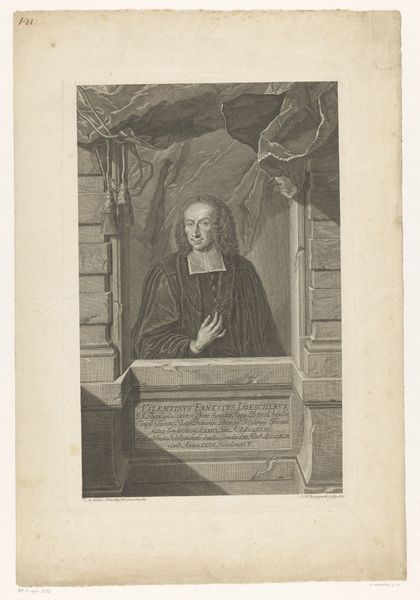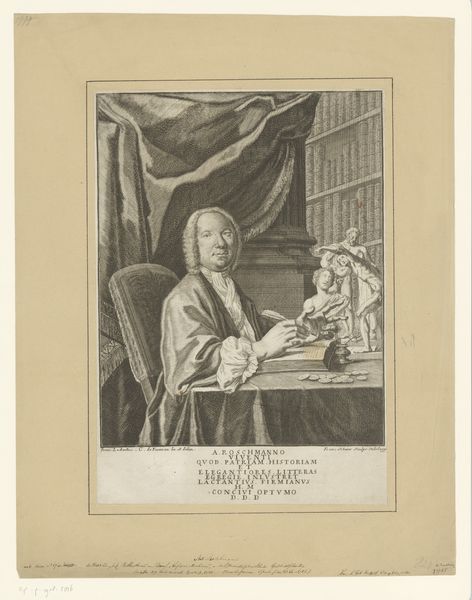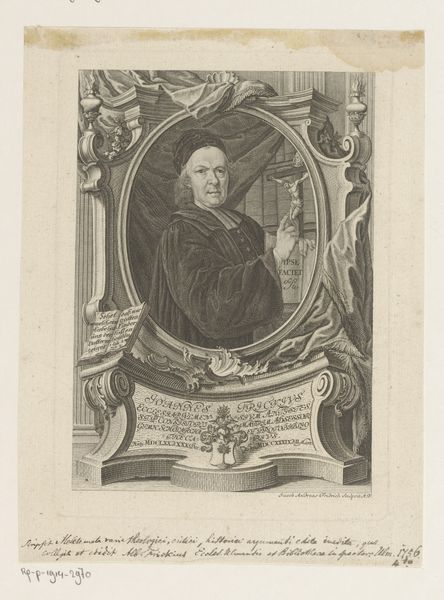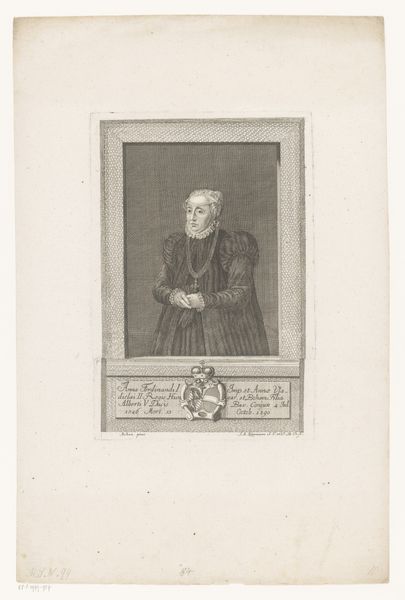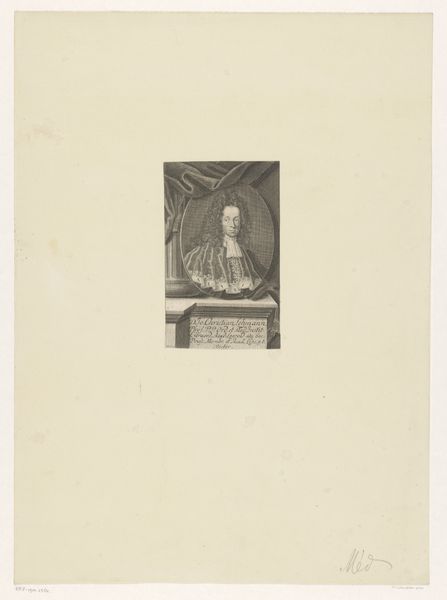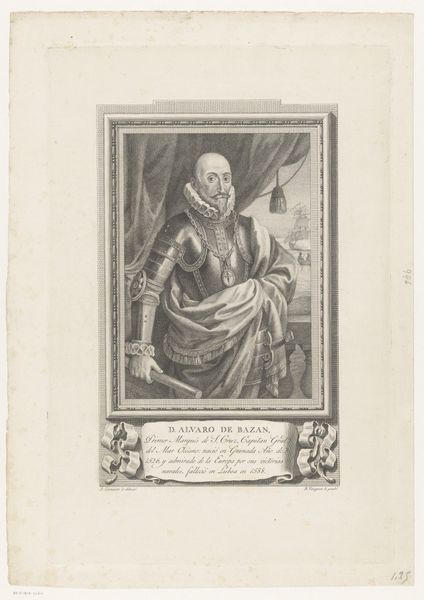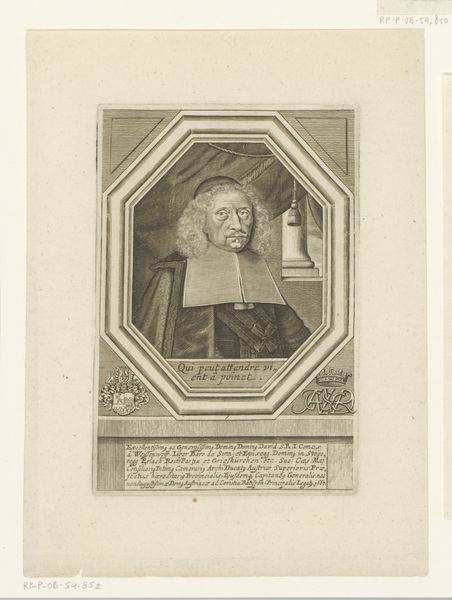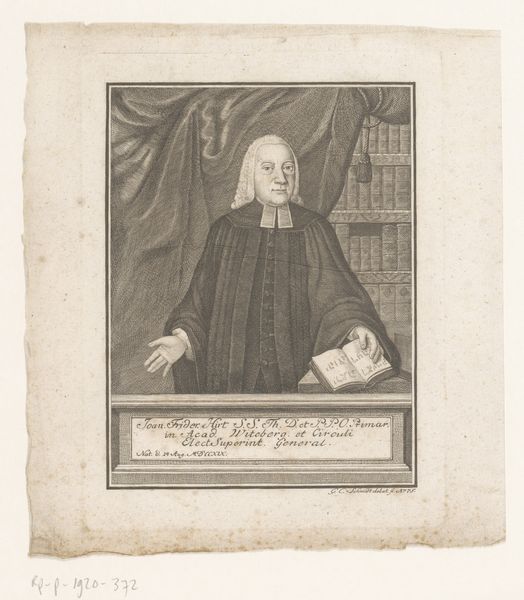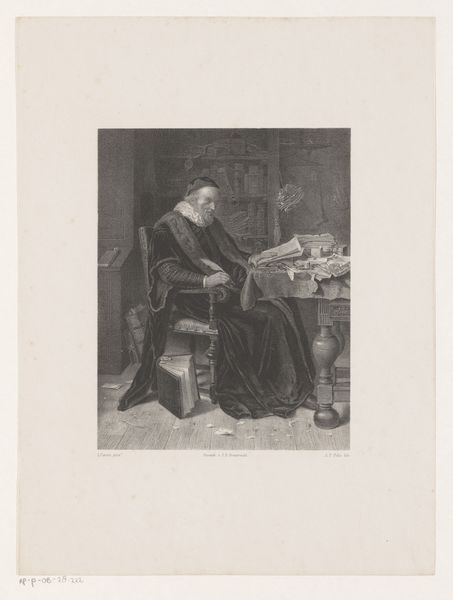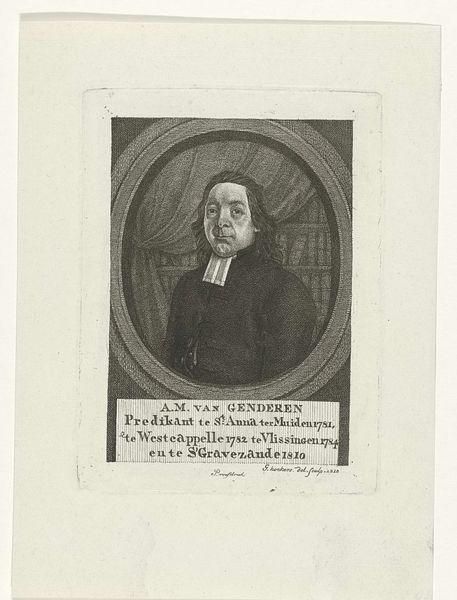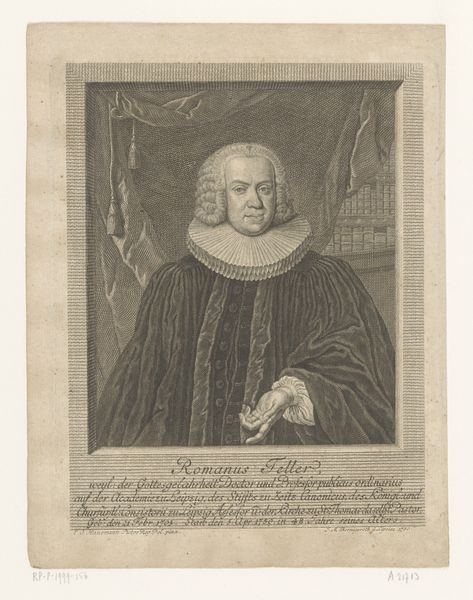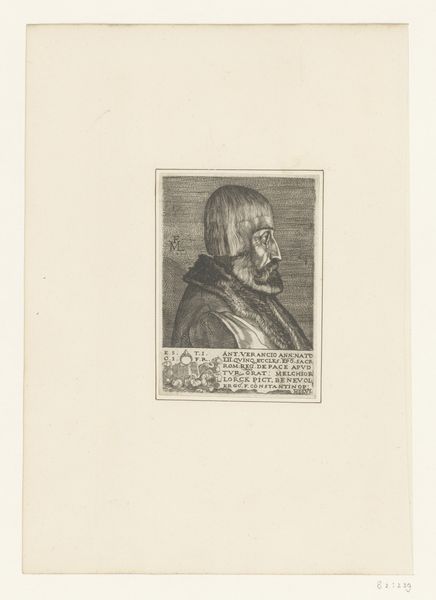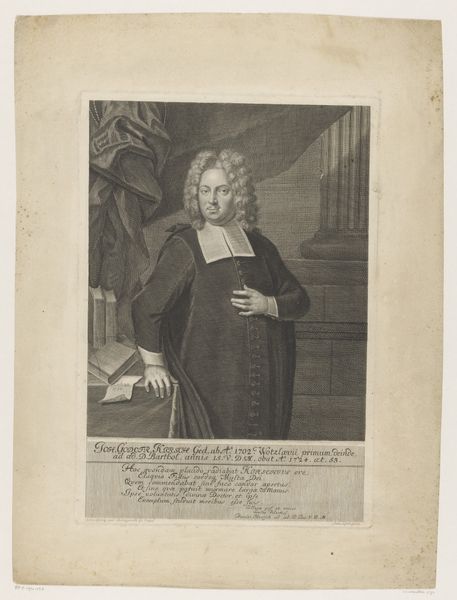
print, engraving
#
portrait
#
baroque
# print
#
old engraving style
#
history-painting
#
engraving
Dimensions: height 150 mm, width 91 mm
Copyright: Rijks Museum: Open Domain
Editor: Here we have a print entitled "Portret van Johann Joachim Pinggieser" made sometime between 1687 and 1743, by Johann Georg Mentzel. The medium is listed as engraving. What strikes me immediately is how the fine lines create a somber, reflective mood. What do you see in this piece? Curator: What grabs me is the *making* of this portrait. An engraving isn't spontaneous; it's built layer by layer. The engraver’s labor becomes part of the subject itself. Consider the time spent meticulously rendering each line – time taken to not only represent Pinggieser, but to memorialize him in this physical, reproducible form. Think about how prints allowed for wider access to images and ideas beyond an elite viewership. Does the material itself shape how we value the image? Editor: That’s interesting, I hadn't thought about the process of engraving itself adding meaning. The labor involved and then how that impacts distribution. It does feel so deliberate and controlled, every mark carefully placed. Do you think the material and labor elevates its value above a quicker sketch? Curator: “Elevate” is a charged word, implying a hierarchy. Perhaps it changes the value. A sketch is immediate, conveying the artist's fleeting impression. But this print, this product of intense labor and reproducibility, it speaks to a different kind of value: commemorative, social. The material itself participates in crafting the sitter's legacy and dissemination through different social strata. What does its status as a printed reproduction mean? Editor: I see your point about "elevate." It’s less about one being “better” and more about different functions and social impacts. It really makes you think about who had access to this image and how it might have been used and by whom, then and now. Thanks! Curator: And considering that is essential for a richer understanding. My pleasure!
Comments
No comments
Be the first to comment and join the conversation on the ultimate creative platform.
